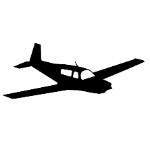Oil Cooler Hose Routing question for M20J (A3B6D/Dual-mag engine) owners.
-
Members Online
- Jake@BevanAviation
- phrogpilot73
- JohnnyJ
- Steve2019
- Fly Boomer
- benworthy058
- Fritz1
- Kerrville
- whiskytango
- cferr59
- Chester
- Deb
- Z W
- Danb
- Bartman
- Pierre07
- Skyland
- Mooney-Shiner
- Kirch56H
- FlyingDude
- Schllc
- Stealth Mooney
- shwn1226
- BrentS
- BaldEagle
- Mac80
- Marc_B
- SkepticalJohn
- DMalott
- N201MKTurbo
- Aerodon
- Shadrach


Recommended Posts
Join the conversation
You can post now and register later. If you have an account, sign in now to post with your account.